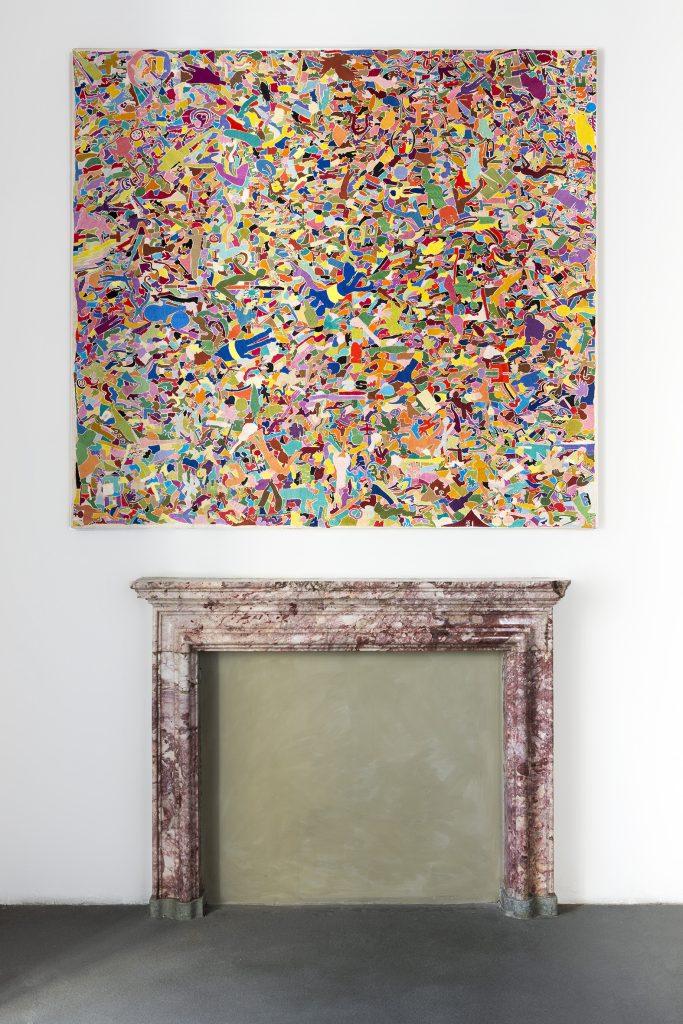Alighiero Boetti
Alighiero Boetti began showing his work in the mid-1960s, within the climate of the experimentalism that, in Italy, would lead to a new definition of the artistic process. A member of the original Arte Povera group, he developed his investigations in an independent direction that emphasized the distance between the idea and the execution of a work. The mental aspect of the art process is fundamental to Boetti’s approach, and he focused on logical systems and abstract concepts in order to continually invent new models of awareness of the world. Using the signature Alighiero e Boetti, he splitted his name in two, inserting an element of contradiction into the unified figure of the artist.
His first solo exhibition was held in early 1967, at the Christian Stein Gallery in Turin; the exhibition included the works in the Castello di Rivoli collection, all dated 1966. These pieces were presented as independent inventions that tend toward a neutral presence in the space; the intentional absence of metaphorical references corresponds to the variety of materials employed. These works already contained the logic of combinatorial play that would run throughout the artist’s oeuvre. In Scala (Ladder) and in Sedia (Chair), beginning with an ordinary ladder and wooden chair, Boetti fixes each structure, continuing the natural course of the lines that compose it. The result is a three-dimensional object, but one conceived as a design charged with potential energy. Catasta (Pile), is made up of a series of bars of Eternit, arranged by the artist to form a tall parallelepiped. Referring to his work he wrote: “The individual perceptual experience is an end in itself.” Zig-Zag consists of a piece of colored striped fabric positioned within a metal structure. Tautologically, the title indicates the movement that the structure imposes on the fabric and the optical effect that it produces. Mancorrente m. 2 (Handrail m. 2) was also in Boetti’s first exhibition; he created this piece with the intention of inducing a pre-determined psychological situation for the viewers. Constructed as a simple handrail made from a chrome-plated bar, the work, according to Boetti, was meant to “dramatize the situation.”
Tutto (Everything), 1987–88, stems from the idea of assembling the greatest possible number of figurative motifs—taken from encyclopedias, children’s books, newspapers and magazines—within the work’s surface. According to the system conceived by the artist, the outlines of each figure should fit together with those of the adjacent figures, so that no empty space remains. The figures are combined in a way that takes advantage of all possible orientations and without heeding the limitations imposed by the edges of the work, thereby reasserting its nature as fragment with regard to a broader totality. For all the works in the series, about one hundred colors are used, and the same amount of thread is employed for each. The choice of chromatic combinations is left to the Afghani embroiderers who execute the work. As with all Boetti’s embroideries after 1979, the year of the Soviet army’s invasion of Afghanistan, the work was created by refugees in Pakistan.
[MB]




